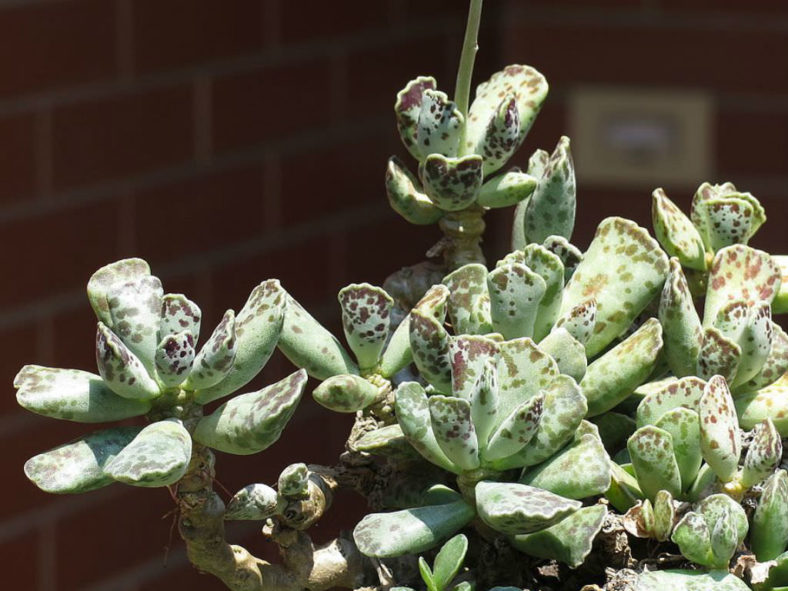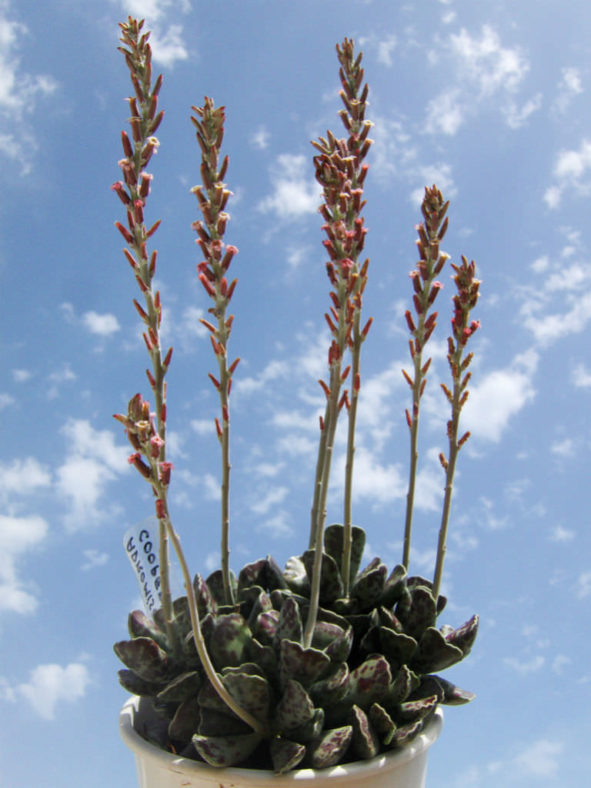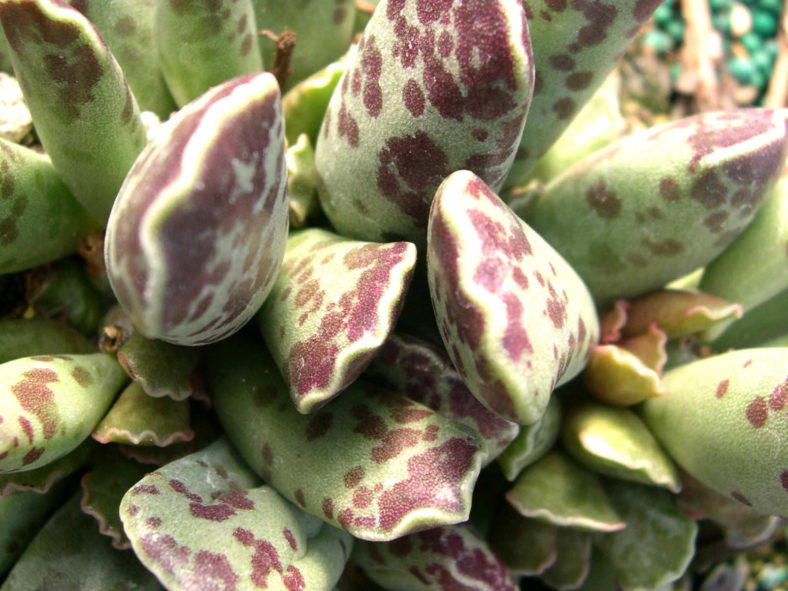Scientific Name
Adromischus cooperi (Baker) A. Berger
Common Name(s)
Plover Eggs Plant
Synonym(s)
Cotyledon cooperi, Echeveria cooperi
Scientific Classification
Family: Crassulaceae
Subfamily: Kalanchoideae
Genus: Adromischus
Etymology
The specific epithet "cooperi" (pronounced "koo-PER-ee") honors Thomas Cooper (1815-1913), an English botanist and explorer who collected plants in South Africa from 1859 to 1862.
Origin
Adromischus cooperi is native to South Africa (Eastern Cape).
Description
Adromischus cooperi is a dwarf, branching succulent with stems densely covered with purple-speckled, silvery-green to blue-green leaves. It slowly grows and can reach a height of 4 inches (10 cm), becoming slightly tree-like with age. The branches are fleshy and narrow at the base, with distinctive wavy ends, and can grow up to 2 inches (5 cm) long.
The pink flowers appear in summer in inflorescences that can grow 14 inches (35 cm) tall.
Forms

Hardiness
USDA hardiness zones 9b to 11b: from 25°F (-3.9°C) to 50°F (10°C).
How to Grow and Care
Many species are easy to grow in any free-draining, gritty compost. Their compact habit allows a collection to be maintained in a small space, and they grow well on any sunny window ledge or the top shelf of the greenhouse. Water mostly from spring to fall; let them dry out between waterings. Adromischus tolerates cool, frost-free conditions during the winter if kept dry. It is also important to keep water off the foliage during the winter. Mealybugs and vine weevils can be discouraged with a systemic insecticide.
Adromischus can be propagated from a single leaf, which should be placed against the pot's side so that the stem ends just touch the compost. Some species drop their leaves easily, and although each leaf will form a new plant, it can be challenging to grow a large specimen. In other cases, leaves for propagation must be carefully detached with a sharp knife.
Learn more at How to Grow and Care for Adromischus.
Links
- Back to genus Adromischus
- Succupedia: Browse succulents by Scientific Name, Common Name, Genus, Family, USDA Hardiness Zone, Origin, or cacti by Genus
Photo Gallery
Click on a photo to see a larger version.


